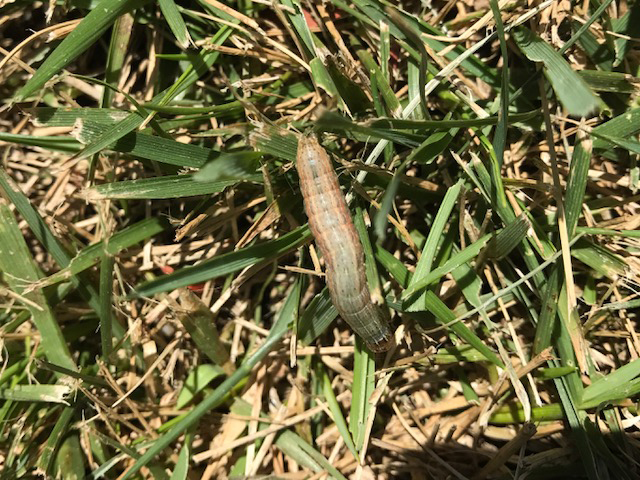 And the worms go marching one by one…well, not quite! But larvae of moths from the noctuidae family can cause serious damage when they march into your turfgrass!
And the worms go marching one by one…well, not quite! But larvae of moths from the noctuidae family can cause serious damage when they march into your turfgrass!
While the damage from these two larvae is similar, their behavior is what separates them: Cutworms are solitary creatures and attack your grass on their own, but armyworm eggs are laid in groups allowing the larvae to feed as a unit. You may not even see them since these creatures feed at night and burrow into soil or thatch during the day. But these larvae can grow up to two inches long, often curling up and lying perfectly still.
 From March through October, you may notice dead, damaged or depressed turfgrass in a circular pattern. This is because they feed on leaves and can cut off plants near the soil’s surface.
From March through October, you may notice dead, damaged or depressed turfgrass in a circular pattern. This is because they feed on leaves and can cut off plants near the soil’s surface.
There are steps you can take to prevent and treat infestation of cutworms and armyworms.
- Remove thatch to clear out where they like to hide during the day.
- Armyworms like damp areas, so avoid overwatering. Water according to your turfgrass’s needs.
- Apply an insecticide to help clear up your infestation:
- Acelepryn: Provides season-long control when applied early
- Aloft: Immediately kills insect activity and lasts up to three months
- Bifenthrin: Controls tough pest problems
- Monterey Garden Insect Spray: A biological insecticide containing spinosad
[box type="info"]Don’t forget to read and follow labels before applying any chemicals. Learn more about insecticide labels here.[/box]
Stop by your local Ewing for these products or help with your turf’s problems. Your friendly Service Professional can help you. Have you experienced an armyworm or cutworm infestation? Let us know you managed it in the comments below.




